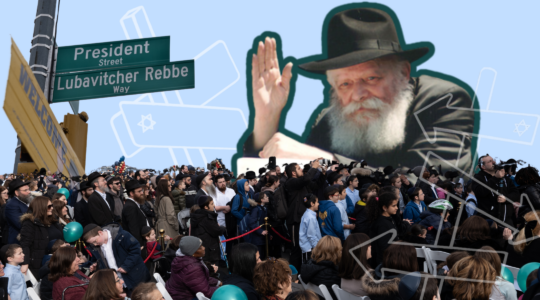Here’s a dirty secret about Jewish journalism: a number of the stories we write aren’t really Jewish in nature. A story may be about a Jew, but other than that, there often isn’t much else of Jewish substance in many of the stories we print.
Editors hate it when you pitch a story whose sole qualification for being published is that your subject is Jewish. But the reality is that mainstream Jewish publications would not exist if we didn’t run these stories.
Which brings me to another dirty secret about Jewish journalism: nothing guarantees publication more than a story about Nazis or Israel. It’s why when people find out I’m a journalist and ask what kind of publication I write for, I say, “A Jewish one.” Then quickly add: “But I actually write more about Nazis.”
In mainstream journalism, there’s an old saw: “If it bleeds, it leads.” The Jewish press’ fixation on Hitler and Hamas is really just a variation on that theme. And so the Jewish journalist is often left with a conundrum — write about the Middle East or anti-Semitism and bask in the glory of front-page play, or write about something less contentious or obvious and accept your place in the back of the book.
Not that I’m complaining. One of most rewarding challenges of my job is writing about things I really care about — history, literature, dance, art, opera — and finding some substantive Jewish issue I can tease out from them.
Often there isn’t, but a deadline looms and I write about it anyway. The result usually isn’t good, and you’ll know it by the fact that my story’s only explicit Jewish content is that such-and-such an artist is Jewish, or had relatives killed in the Holocaust, or was born in Israel.
That was almost the fate of this column.
I wanted to write about a wonderful new exhibit at The Jewish Museum, “Maira Kalman: Various Illuminations (Of A Crazy World).” But with a deadline fast approaching, I could think of only three blatantly obvious Jewish facts of Kalman’s life that made it relevant: one, she was Jewish; two, she was born in Tel Aviv; and three, both her parents immigrated from Europe to Palestine just before the Holocaust.
The fact is that the exhibit, which features dozens of Kalman’s irreverent illustrations, many of them former covers of The New Yorker, doesn’t dig too deeply into Jewish issues either.
Single-sentence wall texts occasionally highlight the fact that a subject in Kalman’s work is Jewish. For instance, a gauche portrait of Walter Benjamin notes that he was a “German-Jewish writer” whose “flight from the Nazis ended with his suicide in 1940.”
Another handsomely painted white-box building, surrounded by a blue sky and what look like date palms, gives nothing more than the illustration’s title: “Tel Aviv Bauhaus Building, (2008),” as if that were enough.
It would be easy to be bothered by this. And perhaps the curators felt that had they allowed for more Jewish themes, it might have felt forced, or — gasp — “too Jewish.” But I was lucky enough to have talked to the artist at the opening. I jumped right to it: there isn’t much explicitly Jewish content in this show, I said, so what makes it worthy of The Jewish Museum?
She explained that it wasn’t her subjects themselves that made them “Jewish.” It was the experiences and stories she grew up with that infused her entire way of looking at the world with a uniquely Jewish imprint. For her, being Jewish, she said bluntly, “influences everything.”
She explained how her mother fled Europe for Palestine in 1932, and her father did the same seven years later. “His entire family was killed in the Holocaust,” she said. “His parents, siblings, his cousins.”
“He carried that with him,” she added, and then, after we said our goodbyes, I took a closer look at her work. This time, it was in the least ostensibly Jewish images where I found the most indelible mark of her Jewishness.
In her illustration of a table strewn with chocolate petit fours and emptied champagne flutes — “Chocolate and Champagne Party” — I saw an un-self-conscious homage to rarefied riches, whereas before I had only seen a wry commentary on decadence and hubris.
In a hilarious winter scene titled “Annual Misery Day Parade,” where a legion of curmudgeons carry signs like “I feel rotten,” I sensed an earnest camaraderie with her subjects when, before, I had seen only sardonic wit.
And in her countless images of people, items, lists — from the myriad of red dots representing the masses at President Obama’s inauguration, to her riff on Matisse’s “Red Room” painting, chock full of bric-a-brac and creaky cupboards — I saw boundless energy, a teeming embrace of life.
Of course in a parallel universe, Kalman might not have been raised Jewish and still had a keen eye for quotidian treasures, the pleasure in life’s small and subtle things. But Kalman was raised Jewish, and was born in this world, and it certainly seems to help.
Eric Herschthal covers arts and culture for the paper.
The New York Jewish Week brings you the stories behind the headlines, keeping you connected to Jewish life in New York. Help sustain the reporting you trust by donating today.




